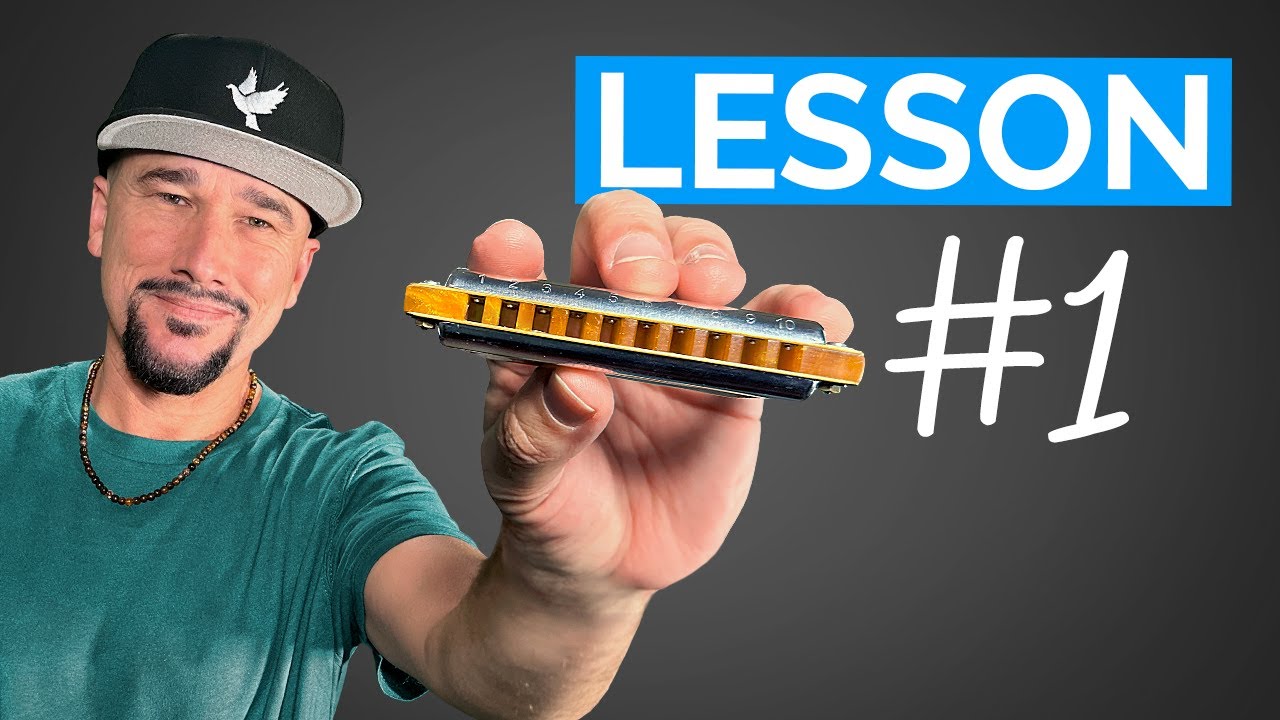For all you new, struggling or just plain ol’ rusty harmonica players here’s the lesson I wish I had when I first picked up a harmonica, in 6 simple steps:
Step #1 Right Harp
Make sure you have the right harmonica: a 10-hole diatonic harmonica, standard tuning, key of C.
If your harmonica has more than 10-holes or has a button on the side, you don’t have the right harmonica to learn on. It’s worth the $20-$60 you need to spend to get a great instrument. My article on best brands is here.
Step #2 Grip
At the beginning it REALLY DOESN’T MATTER how you hold the harp as long as you have PLENTY OF ROOM FOR YOUR LIPS to be deep on the cover plates.
I think pinching it on the sides with one or both hands is a great way to start. If you’re wanting more info, check out my explanation in the video.
Step #3 Breathing
One of the most important foundations of harmonica playing is BREATHING, and there are 2 important ideas for us to remember:
![]() Deep Diaphragmatic Breathing
Deep Diaphragmatic Breathing
When we’re babies, we breathe deeply into our diaphragm, the muscle in our lower bellies that pulls down on our lungs, so that the belly goes OUT when we breathe IN, and vice versa, but many of us forget this and breathe shallow, and we have to re-train ourselves.
![]() Breathe, DON’T Heave. (Most beginners play WAAAAY TOO HARD.)
Breathe, DON’T Heave. (Most beginners play WAAAAY TOO HARD.)
Step #4 Mouth Position
The other most important fundamental is: The Deep Relaxed Mouth Position. This means that the moist inner part of the lips is touching the cover plates of the harmonica.
One way to get into this position is to put the harmonica between your teeth, and then pull it out just slightly away from the teeth. Voila! The deep relaxed mouth position.
Step #5 Chords
On the harmonica it’s easier to play chords than it is single notes. So let’s start by just breathing softly in and out through the harmonica on holes 123. Maybe 4 counts in and 4 counts out.
Step #6 Tone & Articulation
The spectrum of TONE can be described as either “treble” or “bass”.
Bass: Dark, Warm, Fat, Round, Mellow, Smooth
Treble: Bright, Tinny, Thin, Sharp, Harsh, Icepick
As we’re breathing in and out through the harmonica, notice this:
Changing the VOWEL SHAPE OF THE MOUTH changes the TONE OF THE HARMONICA
![]() “Ee” vowel shape produces the most treble tone (bright, tinny, thin, sharp, icepick)
“Ee” vowel shape produces the most treble tone (bright, tinny, thin, sharp, icepick)
![]() “Uh” or “Oo” (like in book) produces a bassy tone (dark, warm, fat, round, mellow)
“Uh” or “Oo” (like in book) produces a bassy tone (dark, warm, fat, round, mellow)
We can add more attack to our chords using ARTICULATION, what I like to call
“The harmonica player’s drumsticks” = Tuh and Kuh
![]() “T” is the tip of the tongue of off the back of the top teeth
“T” is the tip of the tongue of off the back of the top teeth
![]() “K” is the back of the tongue off of the hard palate on the roof of the mouth
“K” is the back of the tongue off of the hard palate on the roof of the mouth
We use these articulations on the harmonica to do the
Train Imitation.
![]() Breathe in “Tuh-Kuh” on holes -123
Breathe in “Tuh-Kuh” on holes -123
![]() Breathe out “Tuh-Kuh” on holes 123
Breathe out “Tuh-Kuh” on holes 123
![]() Rinse and Repeat
Rinse and Repeat
It may help to make the notes shorter. The musical term for this is staccato. It may help to add a “T” to the end of our articulations to help make them shorter:
-123
Tut - Kut
123
Tut - Kut
Start slow, and work on accelerating, and then round it out with a train whistle, which is accomplished by drawing anywhere above holes 1 and 2.
So -34, or -345, or -45 all sound great.
Try this articulation for the whistle: “dwah”. That can help get a little bend, which helps the goal of making the whistle sound as lonesome as possible.
The train imitation is the #1 BEST TECHNIQUE BUILDER for beginners.
You can see and hear all of this in action, plus check out my lesson on grooving with a band, in my Beginner Harmonica Lesson #1.
